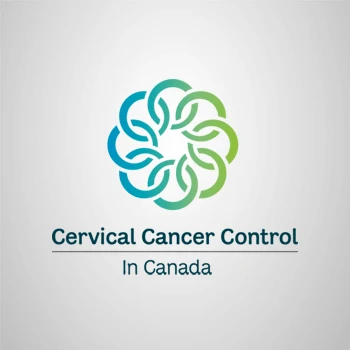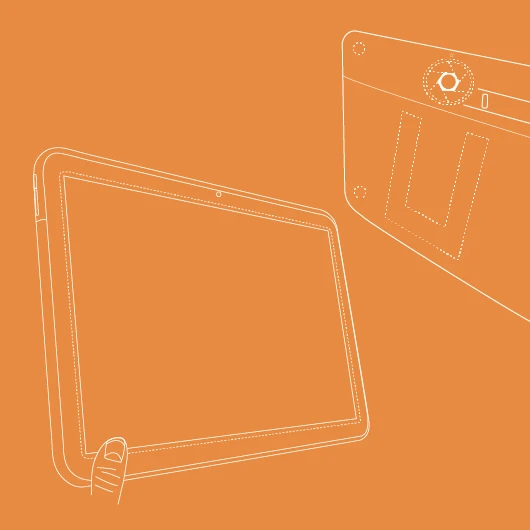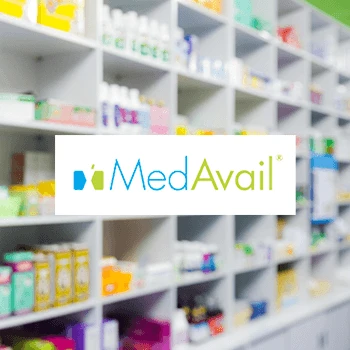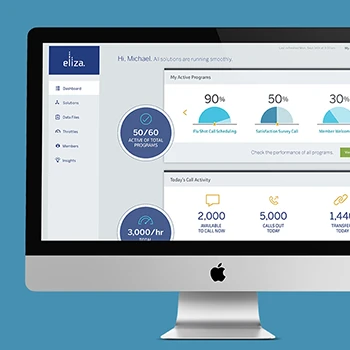How do you ensure UX design meets FDA and healthcare regulatory requirements?
We integrate regulatory compliance from the start, not as an afterthought. Our experience with the FDA and medical device manufacturers has taught us that successful healthcare UX requires understanding IEC 62366 usability standards, FDA human factors guidance, and HIPAA requirements. We document design decisions, conduct formal usability testing protocols, and create traceability matrices linking user needs to design solutions and regulatory requirements.
Tip: Start regulatory discussions during initial design phases. Early alignment with compliance teams prevents costly redesigns and accelerates approval processes.
What's your experience with medical device classification and its impact on UX?
Device classification (Class I, II, or III) fundamentally shapes our UX approach. Higher-risk devices require more rigorous human factors engineering, formal summative testing, and comprehensive documentation. We've worked with assistive technology devices and healthcare management systems, understanding how classification affects everything from research protocols to validation requirements.
Tip: Identify your device classification early. This determines the depth of human factors work required and influences project timeline and budget significantly.
How do you handle HIPAA compliance in digital health UX design?
HIPAA compliance is woven into our design process through privacy-by-design principles. We create user flows that minimize data exposure, design clear consent mechanisms, and ensure audit trails are user-friendly. Our work with healthcare organizations taught us to balance security requirements with usability, ensuring compliance doesn't compromise the user experience.
Tip: Map all points where PHI (Protected Health Information) is accessed or displayed. Design these touchpoints with both security and usability in mind.
What documentation do you provide for regulatory submissions?
We provide comprehensive documentation including use specifications, task analyses, known use problems, user interface specifications, and formative/summative testing reports. Our documentation follows FDA human factors guidance and international standards. Each document traces design decisions back to user needs and safety requirements, creating a clear narrative for regulatory reviewers.
Tip: Establish documentation templates early that align with your regulatory pathway. Consistent documentation throughout development streamlines submission preparation.
How do you manage changes during development while maintaining compliance?
We use formal change control processes that evaluate each modification's impact on safety, effectiveness, and regulatory status. Design changes are assessed against validated user requirements and risk analyses. Our iterative approach includes checkpoint reviews with regulatory stakeholders, ensuring changes enhance usability without compromising compliance or requiring extensive revalidation.
Tip: Create a change impact assessment matrix categorizing modifications by their regulatory impact. This helps prioritize changes and plan validation activities.
What's your approach to international healthcare regulations?
Healthcare products often require global compliance - FDA for US, CE marking for Europe, Health Canada approval for Canada, and others. We design with the most stringent requirements in mind while identifying region-specific adaptations. Our international experience helps navigate varying cultural expectations, language requirements, and regulatory frameworks while maintaining a consistent core experience.
Tip: Design for the strictest regulatory environment first, then adapt for other markets. This approach minimizes rework and accelerates global deployment.
How do you balance innovation with regulatory constraints?
Regulatory constraints often spark creative solutions. Using Experience Thinking principles, we focus on the intended healthcare experience first, then find compliant ways to achieve it. We've seen how constraints in medical device design lead to innovative interfaces that are both safer and more intuitive. The key is viewing regulations as design parameters, not barriers.
Tip: Engage regulatory experts in ideation sessions. Their knowledge of what's possible within regulations can unlock innovative approaches.
How do you identify and mitigate use-related risks in medical device design?
Risk mitigation starts with robust use-related risk analysis (URRA). We identify potential use errors through task analysis, contextual inquiry, and failure mode analysis. Each identified risk is addressed through design controls - making the right action obvious and wrong actions difficult. Our approach aligns with ISO 14971 and FDA guidance, ensuring patient safety drives every design decision.
Tip: Conduct risk analysis sessions with diverse stakeholders including clinicians, patients, and human factors experts. Multiple perspectives reveal risks that might otherwise be missed.
What role does clinical validation play in your UX process?
Clinical validation confirms our designs work in real healthcare environments. We collaborate with healthcare institutions to test designs in context - observing actual workflows, environmental constraints, and user interactions. This validation goes beyond usability labs, revealing how designs perform under real clinical pressures, time constraints, and emergency situations.
Tip: Plan for clinical validation early and budget for multiple sites. Variation across healthcare settings often reveals critical design considerations.
How do you design for patient safety in critical care environments?
Critical care demands exceptional clarity and error prevention. We apply high-reliability design principles: clear information hierarchy, distinctive alerts, confirmation for critical actions, and designs that maintain safety even under stress. Experience Thinking helps us map the complete care journey, identifying where interface design can prevent errors and support rapid, accurate decisions.
Tip: Shadow clinicians during high-stress scenarios to understand decision-making under pressure. Design for the worst-case scenario, not ideal conditions.
What's your approach to designing safety-critical alerts and alarms?
Alert design balances urgency with alarm fatigue prevention. We follow IEC 60601-1-8 standards while conducting contextual research to understand the clinical environment's existing alarm landscape. Our designs use progressive disclosure, smart prioritization, and multimodal feedback to ensure critical alerts get attention without overwhelming users. Testing includes stress scenarios to validate alert effectiveness.
Tip: Audit the complete alarm environment where your device will operate. Your alerts must stand out meaningfully without contributing to alarm fatigue.
How do you ensure designs are safe for vulnerable patient populations?
Vulnerable populations - pediatric, geriatric, or cognitively impaired patients - require specialized consideration. We include these users in research, adapt methods for their capabilities, and design with their specific needs in mind. Our work on assistive technologies like HumanWare's vision aids demonstrates how thoughtful design can maintain safety while maximizing independence.
Tip: Partner with patient advocacy groups for authentic insights into vulnerable population needs. Their expertise invaluable for safe, empowering design.
What's your process for validating safety in home healthcare settings?
Home healthcare presents unique safety challenges - untrained users, uncontrolled environments, and limited support. We conduct in-home research to understand real usage contexts, design for error prevention and recovery, and create intuitive guidance systems. Validation includes testing with actual patients and caregivers in home settings, ensuring safety without clinical oversight.
Tip: Test your device in the messiest, most chaotic home environment you can find. Real homes rarely match the idealized testing environment.
How do you handle safety considerations for connected medical devices?
Connected devices introduce cybersecurity as a patient safety issue. We design secure-by-default interfaces, clear data sharing permissions, and robust error handling for connectivity issues. Our approach ensures devices remain safe and functional even when connections fail. We also design interfaces that help users understand and control their connected device ecosystem.
Tip: Plan for graceful degradation - your device must maintain core safety functions even when all connectivity fails.
How do you recruit and research with busy healthcare professionals?
Healthcare professionals have limited time, so we maximize research efficiency. We use flexible scheduling, remote sessions when appropriate, and observational studies during actual work. Our experience with the Ontario Medical Association portal showed us how to gather rich insights through brief, focused sessions that respect clinical schedules while yielding actionable findings.
Tip: Offer multiple participation options - lunch sessions, shift changes, or remote evening sessions. Flexibility dramatically improves healthcare professional participation.
What special considerations exist for patient research in healthcare?
Patient research requires extra sensitivity regarding health conditions, privacy, and emotional states. We adapt research methods to participant capabilities, ensure comfortable environments, and maintain strict confidentiality. IRB approvals, appropriate consent processes, and participant well-being protocols are fundamental. Our research always respects the patient's health journey while gathering essential insights.
Tip: Build relationships with patient advocacy organizations. They provide trusted access to patient communities and valuable perspective on research approaches.
How do you conduct research in sterile or restricted clinical environments?
Researching in operating rooms, ICUs, or sterile processing requires special protocols. We obtain necessary clearances, follow infection control procedures, and use minimally invasive observation techniques. Video ethnography, post-procedure interviews, and simulation labs help gather insights when direct observation is limited. Experience from healthcare clients taught us to be creative while respecting clinical constraints.
Tip: Develop relationships with simulation centers. They provide realistic clinical environments for research without the constraints of active patient care areas.
What's your approach to understanding complex clinical workflows?
Clinical workflows involve multiple users, departments, and systems. We use journey mapping, service blueprinting, and workflow analysis to understand interconnections. The Experience Thinking framework helps identify how brand, content, product, and service experiences intersect in clinical settings. We map both current and ideal states, identifying optimization opportunities while respecting established clinical protocols.
Tip: Shadow complete procedures from start to finish, including preparation and documentation. The full workflow often reveals critical design requirements.
How do you handle research with sensitive health conditions?
Researching sensitive conditions requires extra ethical consideration and emotional intelligence. We work with clinical partners to ensure appropriate support, adapt methods to minimize distress, and focus on empowerment rather than limitations. Our approach treats participants as experts in their own experience, gathering insights that lead to more compassionate, effective designs.
Tip: Include clinical psychologists or social workers in your research planning for sensitive conditions. Their expertise helps create supportive research protocols.
What methods work best for understanding patient-provider interactions?
Patient-provider interactions shape healthcare experiences profoundly. We use paired interviews, role-playing exercises, and communication journey mapping to understand both perspectives. Video analysis of consultations (with consent) reveals communication patterns and opportunities for technology to enhance rather than hinder these crucial interactions. Our goal is strengthening the human connection in healthcare.
Tip: Research both successful and challenging patient-provider interactions. Understanding what goes wrong is as valuable as studying what works well.
How do you ensure research validity in healthcare's variable environment?
Healthcare environments vary dramatically - teaching hospitals differ from community clinics, emergency departments from outpatient settings. We ensure validity through multi-site research, diverse participant recruitment, and contextual documentation. Statistical significance combines with qualitative richness to provide robust findings that account for healthcare's inherent variability.
Tip: Document environmental factors meticulously during research. Lighting, noise levels, and space constraints significantly impact design requirements.
How does Experience Thinking apply to Medical device design?
Experience Thinking transforms medical device design by connecting all touchpoints - from unboxing through daily use to maintenance. The framework ensures devices deliver on their brand promise (trust, reliability), present content clearly (instructions, data), provide excellent product experience (ergonomics, usability), and integrate into service experiences (clinical workflows). This holistic view creates devices that truly serve healthcare needs.
Tip: Map your device's role across all four Experience Thinking quadrants. Gaps in any area can undermine clinical adoption and patient outcomes.
What's your approach to designing intuitive medical device interfaces?
Intuitive medical interfaces emerge from deep understanding of user mental models and clinical contexts. We study how healthcare professionals think about procedures, map their conceptual models, and design interfaces that align with clinical reasoning. Progressive disclosure, consistent interaction patterns, and careful information architecture create interfaces users understand immediately, critical in healthcare's time-pressured environment.
Tip: Test interface concepts with paper prototypes before any development. Quick iterations on low-fidelity designs save significant time and cost.
How do you handle the complexity of multi-user medical devices?
Medical devices often serve diverse users - specialists, nurses, technicians, patients, and caregivers. We create user profiles for each, understanding their different needs, capabilities, and contexts. Role-based interfaces, adaptive complexity, and clear permission models ensure each user gets appropriate functionality. Our experience demonstrated how serving multiple user types requires thoughtful information architecture.
Tip: Design primary workflows for each user type separately, then identify where they intersect. This prevents any user group from being an afterthought.
What's unique about designing combination products (drug-device combinations)?
Combination products require understanding both pharmaceutical and device regulations while designing for medication safety. We consider the complete usage cycle - storage, preparation, administration, and disposal. Clear dosing interfaces, error prevention mechanisms, and intuitive feedback ensure safe medication delivery. Experience Thinking helps connect the medication journey with the device interaction.
Tip: Include pharmacists in your design process. Their medication safety expertise reveals critical design requirements often missed by device-focused teams.
How do you design for long-term medical device use and adherence?
Long-term use requires designing for motivation, habit formation, and evolving user expertise. We study how device relationships change over time - initial learning, routine use, and advanced features. Designs support this journey through adaptive interfaces, meaningful feedback, and connection to health outcomes. The service experience becomes crucial for maintaining engagement over months or years.
Tip: Research with both new and experienced users. Their different needs reveal how your design must support the complete user journey.
What's your process for medical device form factor and ergonomics?
Form factor begins with extensive contextual research - understanding use environments, user capabilities, and clinical workflows. We prototype iteratively, testing with diverse users including those with limited dexterity or strength. Ergonomics considers not just the primary user but everyone who handles the device - from shipping to cleaning staff. Our assistive technology experience emphasizes universal design principles.
Tip: Test ergonomics with users wearing full PPE and in awkward positions. Real clinical use rarely happens in ideal ergonomic conditions.
How do you approach medical device error prevention and recovery?
Error prevention starts with understanding likely use errors through analysis and testing. We design interfaces that make correct actions obvious and incorrect actions difficult. When errors occur, recovery must be clear and safe. Our approach includes defensive design strategies, clear error messages, and safe recovery paths that don't compromise patient care.
Tip: Conduct failure mode testing with stressed, distracted users. Understanding how errors occur under pressure improves prevention strategies.
How do you design patient portals that actually get used?
Successful patient portals provide immediate value while building engagement over time. We focus on key patient jobs-to-be-done: accessing results, scheduling appointments, communicating with providers, and managing health information. Our healthcare client experiences show that adoption comes from solving real patient problems, not just digitizing existing processes. Clear information architecture and mobile optimization are essential.
Tip: Start with the most frequent patient tasks and perfect those experiences. Early wins build trust and encourage deeper engagement.
What's your approach to telehealth and virtual care UX?
Telehealth UX must recreate the trust and connection of in-person visits while leveraging digital advantages. We design for technical accessibility, clear communication channels, and clinical workflow integration. Experience Thinking ensures the virtual care brand promise aligns with service delivery. Our approach considers both synchronous visits and asynchronous care coordination.
Tip: Test with users on poor internet connections. Telehealth must work reliably for users with limited technical resources.
How do you design healthcare apps that maintain engagement?
Healthcare app engagement requires balancing clinical value with user motivation. We design for habit formation through appropriate notifications, meaningful progress tracking, and connection to health outcomes. The app becomes part of the broader service experience, integrating with clinical care rather than standing alone. Our approach emphasizes sustainable engagement over initial excitement.
Tip: Design for the 'day 30' experience, not just onboarding. Long-term engagement patterns reveal true design success.
What's your strategy for EHR integration and interoperability?
EHR integration requires understanding both technical standards (HL7, FHIR) and clinical workflows. We design interfaces that respect existing EHR patterns while improving specific workflows. Our approach minimizes data entry, reduces cognitive load, and ensures critical information flows seamlessly. Integration testing includes real clinical scenarios to validate workflow improvements.
Tip: Shadow users in their current EHR workflows before designing integrations. Understanding pain points guides meaningful improvements.
How do you handle healthcare data visualization and clinical decision support?
Clinical data visualization must support rapid, accurate decision-making without overwhelming users. We apply information design principles specific to healthcare - using established clinical conventions while improving clarity. Progressive disclosure, smart defaults, and contextual information help clinicians find insights quickly. Our visualizations are tested in realistic clinical scenarios to ensure they support actual decision-making needs.
Tip: Include both clinical experts and data visualization specialists in design reviews. The intersection of their expertise creates optimal solutions.
What's your approach to AI and machine learning in healthcare UX?
AI in healthcare requires exceptional transparency and trust-building. We design interfaces that make AI recommendations clear, explainable, and appropriately integrated into clinical judgment. Our AI UX services ensure clinicians understand AI confidence levels, data sources, and limitations. The experience maintains human expertise at the center while leveraging AI capabilities appropriately. Patient-facing AI requires even more careful explanation and consent design.
Tip: Always provide AI explainability for healthcare applications. Clinicians and patients must understand how recommendations are generated to trust and use them effectively.
How do you design for healthcare's mobile and BYOD challenges?
Mobile healthcare faces unique challenges - HIPAA compliance, diverse devices, and clinical use cases. We design responsive interfaces that maintain functionality across devices while ensuring security. Our approach includes offline capabilities, appropriate data caching, and clear security indicators. Experience from healthcare clients shows mobile success requires balancing convenience with compliance.
Tip: Test on the oldest devices still in clinical use. Healthcare organizations often have longer technology refresh cycles than expected.
How do you manage change in healthcare organizations?
Healthcare change management requires understanding clinical culture, hierarchies, and workflow impacts. We engage champions across roles - physicians, nurses, administrators - building coalition for change. Training design considers different learning styles and time constraints. Our implementation support includes workflow integration guides, quick reference materials, and ongoing optimization based on usage data.
Tip: Identify clinical champions early and involve them throughout design. Their endorsement dramatically improves adoption rates.
What's your approach to healthcare pilot programs and phased rollouts?
Healthcare pilots require careful site selection, success metrics, and scaling plans. We design pilots to test key assumptions while minimizing disruption. Data collection includes both quantitative metrics and qualitative feedback. Our experience shows successful pilots balance thorough testing with momentum maintenance. Phased rollouts use pilot learnings to optimize subsequent deployments.
Tip: Choose pilot sites representing different use contexts. A successful teaching hospital pilot might fail in community clinics without adaptation.
How do you ensure sustainable adoption in clinical settings?
Sustainable adoption requires designs that improve clinical outcomes while fitting naturally into workflows. We measure not just initial training success but long-term usage patterns. Support systems include peer champions, refresher training, and continuous improvement processes. Experience Thinking ensures all touchpoints reinforce adoption - from initial training through daily use.
Tip: Plan for 6-month and 12-month adoption assessments. Long-term usage patterns reveal design elements needing refinement.
What training approaches work best for healthcare users?
Healthcare training must accommodate varying technical skills, time constraints, and learning preferences. We create role-based training paths, microlearning modules, and just-in-time support resources. Simulation-based training allows safe practice before patient care. Our approach includes train-the-trainer programs, ensuring sustainable knowledge transfer within organizations.
Tip: Create training that can be completed in 15-minute segments. Healthcare professionals rarely have uninterrupted training time.
How do you handle integration with existing healthcare systems?
Healthcare environments include complex technical ecosystems - EHRs, PACS, laboratory systems, and more. We map integration points early, understanding data flows and workflow touchpoints. Design decisions consider technical constraints while optimizing user experience. Our approach includes fallback options for integration failures, ensuring clinical care continues even when systems don't communicate perfectly.
Tip: Document all system dependencies and design for graceful degradation. Healthcare can't stop when integrations fail.
What's your approach to measuring healthcare UX success?
Healthcare success metrics span clinical outcomes, efficiency gains, user satisfaction, and safety improvements. We establish baseline measurements, implement analytics thoughtfully (respecting privacy), and create dashboards for ongoing monitoring. Success measurement includes both quantitative metrics and qualitative feedback, understanding the full impact on patient care and clinical workflows.
Tip: Connect UX metrics to clinical quality measures. Showing improved patient outcomes justifies continued UX investment.
How do you support healthcare organizations post-implementation?
Post-implementation support recognizes that healthcare needs evolve continuously. We provide frameworks for gathering ongoing feedback, processes for iterative improvement, and guidance for scaling successful features. Our support includes optimization recommendations based on usage data, emerging clinical needs, and regulatory changes. The goal is building internal capability for continuous experience improvement.
Tip: Establish regular review cycles aligned with clinical quality improvement processes. This embeds UX improvement into existing healthcare rhythms.
How do you calculate ROI for healthcare UX investments?
Healthcare ROI encompasses clinical outcomes, operational efficiency, and risk reduction. We measure reduced medical errors, decreased training time, improved patient satisfaction scores, and clinician efficiency gains. Our experience shows UX investment returns through reduced support calls, faster adoption, and better clinical outcomes. Regulatory compliance achieved through good UX design also provides risk mitigation value.
Tip: Track both hard ROI (efficiency gains) and soft ROI (clinician satisfaction, patient experience). Healthcare decisions consider both quantitative and qualitative value.
What's the typical investment range for medical device UX?
Medical device UX investment varies by device class, complexity, and regulatory requirements. Class III devices require more extensive human factors work than Class I devices. Investment includes initial research, iterative design, formal testing, and documentation. Our experience across device types helps scope efforts appropriately. Consider UX investment as risk mitigation - preventing recalls and ensuring market success.
Tip: Budget 10-20% of total development costs for UX in medical devices. This investment prevents costly late-stage changes and regulatory delays.
How does UX investment reduce healthcare implementation risks?
Poor UX is a leading cause of healthcare technology implementation failure. UX investment reduces risks through early user validation, workflow integration testing, and adoption planning. We've seen how solid UX design prevents the common pitfall of technically sound solutions that clinicians reject. Risk reduction includes preventing medical errors, ensuring regulatory compliance, and avoiding costly post-launch modifications.
Tip: Calculate the cost of implementation failure in your business case. UX investment is insurance against this significant risk.
What's the value of UX in healthcare competitive differentiation?
In healthcare's competitive landscape, UX provides sustainable differentiation. Superior user experience drives clinical preference, faster adoption, and stronger customer loyalty. Our Experience Thinking approach ensures differentiation across all touchpoints - not just product features but entire service experience. Healthcare organizations increasingly select solutions based on user experience, recognizing its impact on clinical outcomes.
Tip: Research competitor experiences from actual clinical users. Understanding experience gaps reveals differentiation opportunities.
How do you demonstrate UX value to healthcare executives?
Healthcare executives respond to metrics linking UX to strategic objectives - patient outcomes, operational efficiency, and financial performance. We create executive dashboards showing UX impact on key performance indicators. Case studies from similar organizations provide credible evidence. Pilot programs demonstrate value with minimal risk. Our approach connects user experience improvements to organizational mission and strategic goals.
Tip: Frame UX value in clinical quality terms. Patient safety and care quality resonate more than technical usability metrics.
What's the ongoing investment needed for healthcare UX excellence?
Healthcare UX requires continuous investment due to evolving regulations, clinical practices, and user expectations. Annual investment typically includes user research, iterative improvements, training updates, and optimization. We help organizations build sustainable UX practices that balance ongoing investment with operational budgets. The investment maintains competitive advantage and ensures continued regulatory compliance.
Tip: Build UX into operational budgets, not just capital projects. Sustainable excellence requires consistent investment in user understanding and improvement.
How does Experience Thinking maximize healthcare UX investment value?
Experience Thinking maximizes value by ensuring investments create connected, coherent experiences rather than point solutions. By addressing brand, content, product, and service holistically, each investment reinforces others. This approach prevents the common healthcare problem of excellent clinical tools undermined by poor service experience. Our framework ensures every dollar spent contributes to the overall healthcare experience.
Tip: Evaluate UX investments against all four Experience Thinking quadrants. Gaps in any area can undermine your total investment value.









